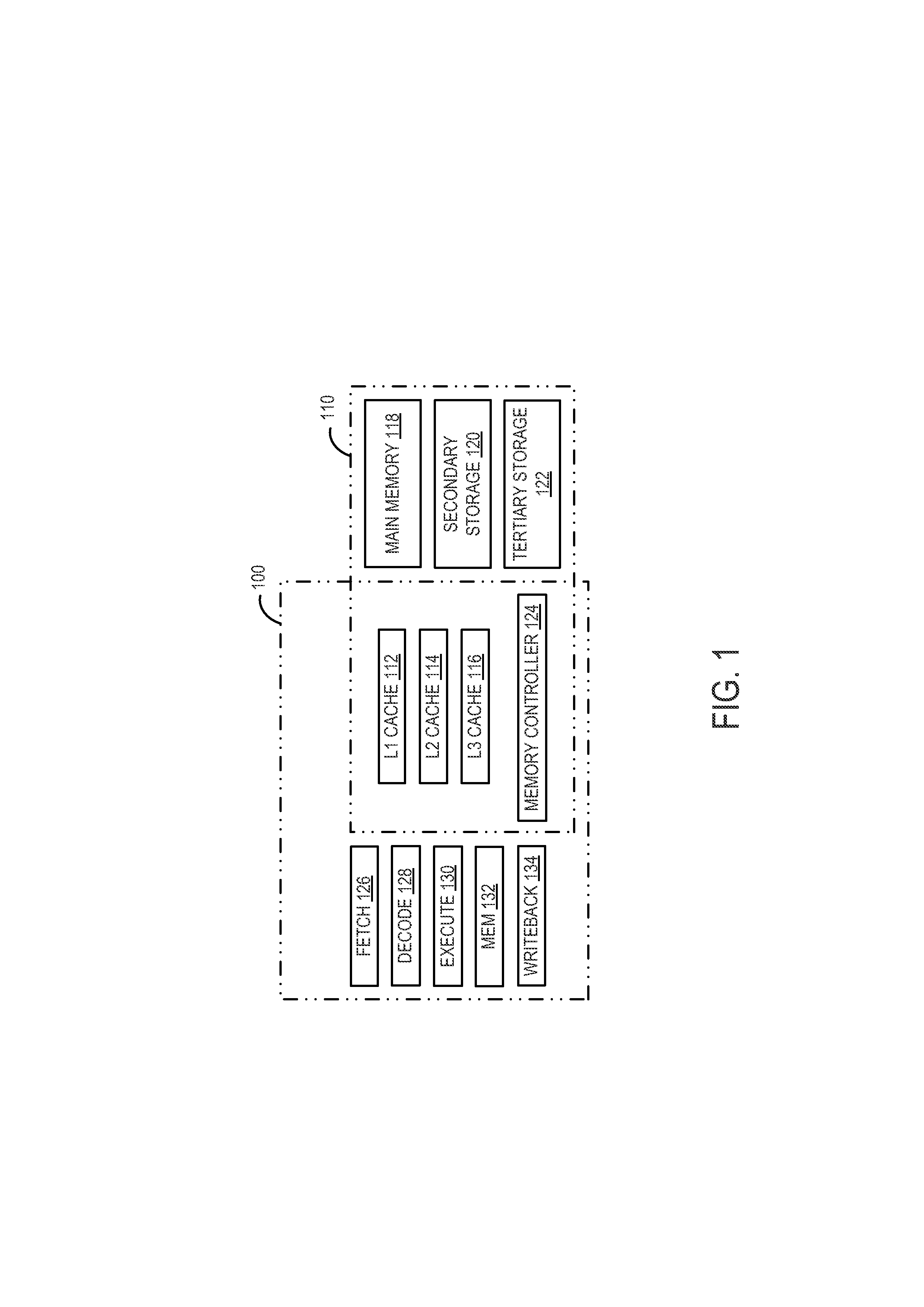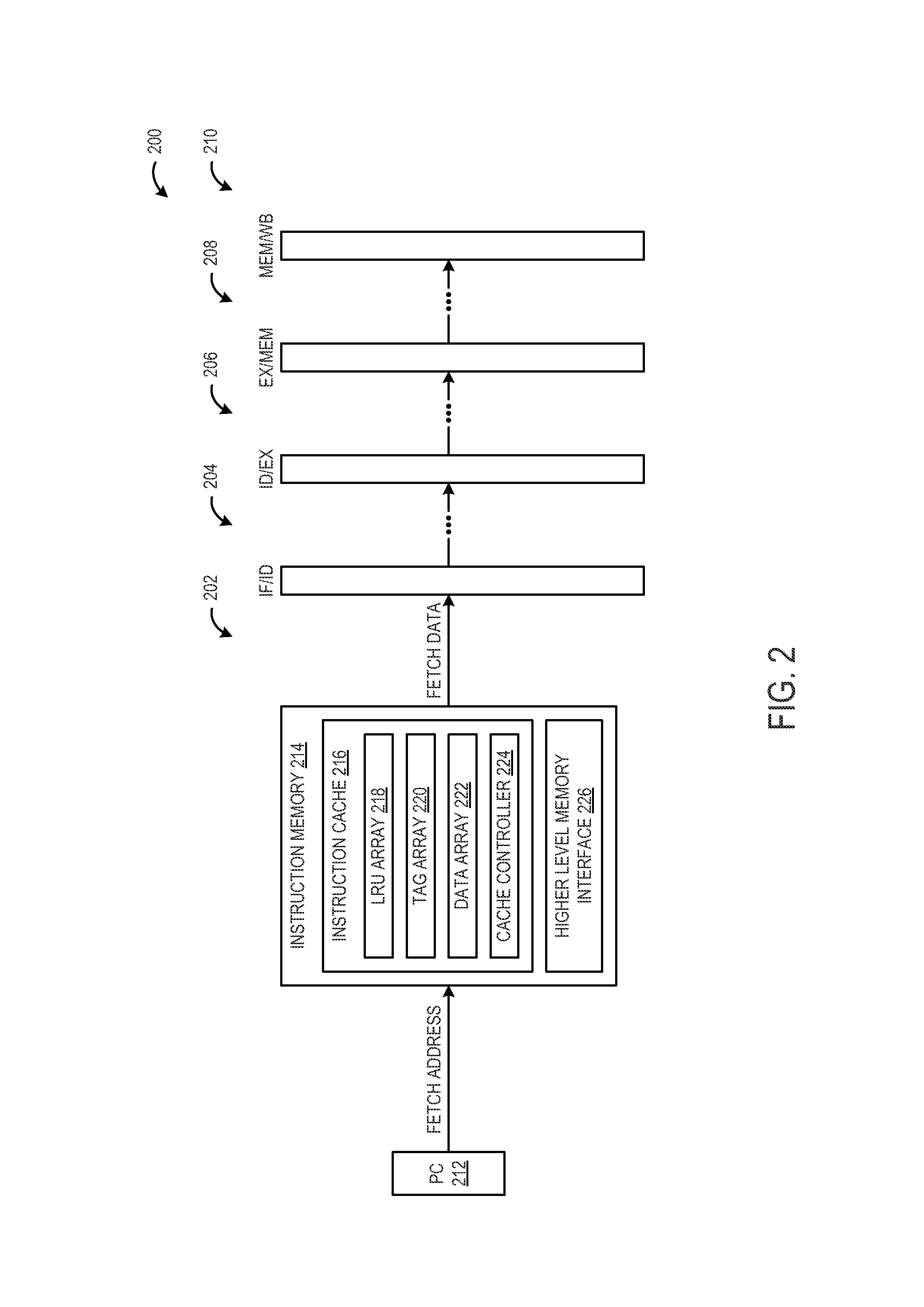Instruction cache power reduction
a cache and power reduction technology, applied in the direction of memory adressing/allocation/relocation, climate sustainability, instruments, etc., can solve the problems of increasing power consumption in favor of increasing processing speed, limiting parallel and serial approaches, and more power hungry
- Summary
- Abstract
- Description
- Claims
- Application Information
AI Technical Summary
Benefits of technology
Problems solved by technology
Method used
Image
Examples
Embodiment Construction
[0012]The present discussion sets forth novel systems and methods for controlling an instruction cache of a microprocessor in such a manner that power consumption is reduced without significantly reducing performance of the microprocessor. More particularly, the present discussion relates to optimizing control of an instruction cache by determining a most-recently-used (MRU) way (or address) from a set of ways in the instruction cache that is specified in an instruction fetch. The information about the MRU way is used to efficiently access the instruction cache by only activating the MRU way and not activating the other ways in the cacheline set to retrieve data stored at the MRU way. In this way, if there is a cache hit at the MRU way, the amount of power consumed to look up the data in the instruction cache may be decreased relative to implementations where all ways in a set are activated to retrieve data from a single way. Moreover, the MRU way can be looked up in parallel with t...
PUM
 Login to View More
Login to View More Abstract
Description
Claims
Application Information
 Login to View More
Login to View More - R&D
- Intellectual Property
- Life Sciences
- Materials
- Tech Scout
- Unparalleled Data Quality
- Higher Quality Content
- 60% Fewer Hallucinations
Browse by: Latest US Patents, China's latest patents, Technical Efficacy Thesaurus, Application Domain, Technology Topic, Popular Technical Reports.
© 2025 PatSnap. All rights reserved.Legal|Privacy policy|Modern Slavery Act Transparency Statement|Sitemap|About US| Contact US: help@patsnap.com



